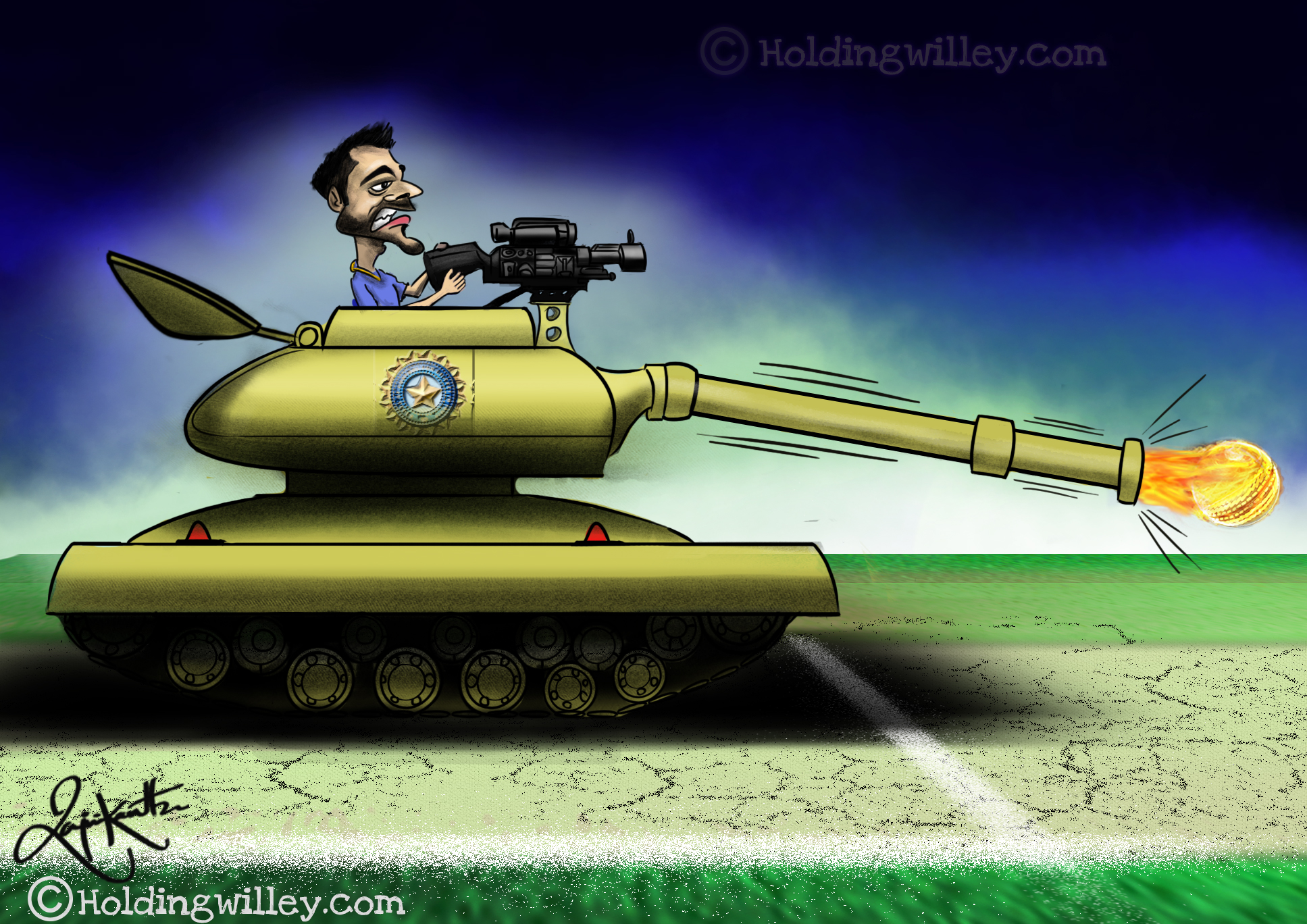 In 1st Test against Sri Lanka, though almost 2 days were lost to rain, India looked to be in position to win the game. But the visitors managed a narrow escape on the last day. For the first time in the history, no Indian spinner could get a wicket in a Test in India. All 17 wickets were taken by pacers. Although the Indian pacers were assisted by the overcast sky and pacer friendly wicket, one cannot overlook the fact that India’s pace bowling has drastically improved in the past few years.
In 1st Test against Sri Lanka, though almost 2 days were lost to rain, India looked to be in position to win the game. But the visitors managed a narrow escape on the last day. For the first time in the history, no Indian spinner could get a wicket in a Test in India. All 17 wickets were taken by pacers. Although the Indian pacers were assisted by the overcast sky and pacer friendly wicket, one cannot overlook the fact that India’s pace bowling has drastically improved in the past few years.
India’s pace bowling history
India played their 1st Test in 1932 but had to wait till 1978 when they got a genuine fast bowler- Kapil Dev. That shows how heavily dependent India was on spinners. But things are changing now. The baton passed from Kapil Dev to Javagal Srinath, from Srinath to Zaheer Khan, and from Zaheer Khan to Ishant Sharma. However, there were only 1 or 2 bowlers who could threaten batsmen in the team at any given time.
Due to dearth of quality fast bowlers, Indian selectors tried several quicks without considering whether they were fully fit or able to bowl at the international level. At certain times, too much pressure and expectation was put on them to knock out the opponents’ batting line ups. That resulted in breakdown of a fast bowler as most of the times he didn’t get any assistance from other end.
Since 2003, India has had plethora of fast bowlers who showed glimpses of promise early in their careers but faded away very soon: Irfan Pathan, L Balaji, Jaydev Unadkat, Abhimanyu Mithun, Vinay Kumar, Ashoke Dinda, Varun Aaron… the list goes on.
The resurgence
The quality of Indian fast bowlers has immensely increased over last few years; not only in Test cricket but in limited overs cricket as well. During 1970s and 1980s, Indian bowling was dependent on the spin quartet, but now they have a quality fast bowling quartet in Bhuvneshwar Kumar, Mohammed Shami, Umesh Yadav and Ishant Sharma.
These 4 bowlers have ability to win Test matches for India. One of the main reasons for India’s dominance in all home Test series is their fast bowlers. After Virat Kohli has taken over as captain, the fitness standards in Indian team have drastically increased. It is evident from the fact that Umesh Yadav played the entire domestic season, right from England’s tour of India in 2016. An interesting statistic about these 4 bowlers is that each of them has taken at least 2 or more wickets in every single Test match they have played since 2016.
In ODIs, Bumrah has emerged as a death overs specialist. A big advantage to India is their in-form all-rounder Hardik Pandya. Pandya significantly contributed with the ball to support other fast bowlers. India is currently ranked number 1 in the ICC Test rankings. Though it is mainly because of their batsmen and spin bowlers, the invisible effort of these 4 fast bowlers played a vital role in the journey towards being the number 1 side in Test cricket.
All-inclusive pace attack
India hasn’t had a settled fast bowling unit for a long time. Fast bowling was heavily dependent on one or two main bowlers. An injury or drop in form immediately made bowling India’s weakness, especially in overseas conditions. As a result of that, India had to keep rotating their fast bowlers frequently.
But now India has found right combination of their fast bowlers. Umesh Yadav can bowl long spells with consistent pace above 140+ kmph. Bhuvneshwar Kumar has ability to swing the new ball early on in the innings to trouble opposition batsmen. Ishant Sharma generates a good bounce; in fact, his best spell of 7/74 came against England where he bounced out English batsmen in India’s famous victory at Lords in 2014. When the ball gets older, Mohammad Shami has the ability to reverse swing the ball. Similarly, in limited overs matches, India have Bumrah who is hard to score off in death overs and Hardik Pandya, who can bowl in the middle overs as well as the death overs.
A strong tail
Over the years, India’s batting tail hardly offered any resistance. It was always easy for opposing teams to run through India’s batting line up after taking 6-7 wickets. But these 4 bowlers are no minnows with the bats. Bhuvneshwar Kumar and Umesh Yadav have first class tons on their name, while Shami and Ishant Sharma have the ability to stay at the crease and maintain a partnership with a batsman at the other end.
The road ahead
India has outperformed every other team in Tests and ODIs in the recent past. However, their real challenge will be in next one and half years, where they are scheduled to tour South Africa, England, and Australia in 2018. Then a tour of New Zealand, before playing the World Cup in England in 2019.
Considering this schedule, India has converted their fast bowling unit from a weakness to a strength. Having charged up their pace battery at the right time, the upcoming 18 months will be crucial for Indian pace bowlers to deliver and repeat India’s domestic success overseas.
Fast. Lite. Innovative. Shareable. Download our HW Cricket App, for Android and iOS!